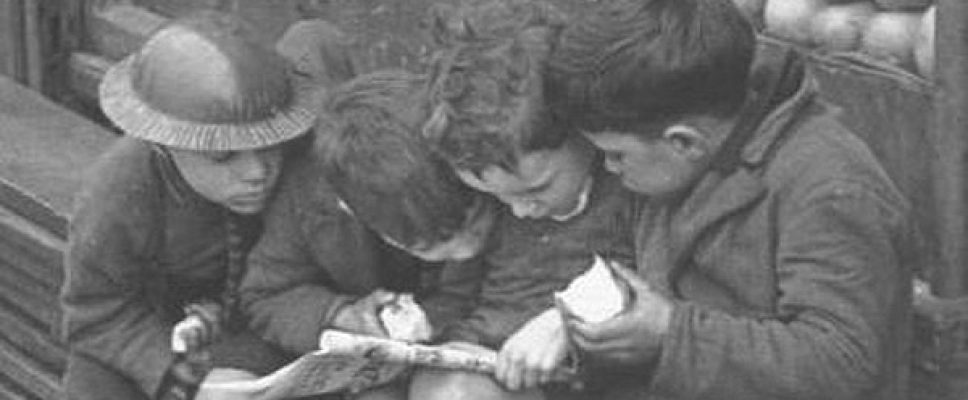Book Review: 97 Orchard by Jane Ziegelman
97 Orchard: The Edible History of Five Immigrant Families in One New York Tenement by Jane Ziegelman is a valuable addition to your library if you’re interested in how normal people lived in the past. Not the aristocracy. Real people.
 Ms. Ziegelman is the director of the Tenement Museum’s culinary center. Her well-researched book covers the lives of five immigrant families, starting with the Glockner family in 1864. Lucas Glockner, a German immigrant, saved his pennies and built the tenement house which his family then lived in. He rented out the rest of the building to everyone else.
Ms. Ziegelman is the director of the Tenement Museum’s culinary center. Her well-researched book covers the lives of five immigrant families, starting with the Glockner family in 1864. Lucas Glockner, a German immigrant, saved his pennies and built the tenement house which his family then lived in. He rented out the rest of the building to everyone else.
The tenement, now a museum, was five stories high, with no running water. Subdivide that building into twenty-two apartments, each about 325 square feet with three rooms, and you can imagine how many people were crammed into this one building.
Yet 97 Orchard was not unique. Plenty of tenements were built in New York City, all similar to this one. Five stories seemed to be the maximum height a building could be, without elevators or pumps to move water up to the top floor.
Tenements were cheap housing, and eventually, if a family could afford better, they’d move on. More light, more space, running water, the shifting ethnic composition of the neighborhood; families moved in and out. Sometimes they moved because they were skipping out on the rent.
There were many more than five families residing at 97 Orchard Street, but the focus on five families lets the author go into depth about the different ethnicities flooding into New York City from 1860 or so on up to the 1930’s, their different eating habits, and their different futures.
These families had a few things in common. They were all desperately poor and they all needed to eat and survive in a strange new world.
After the Glockners and an in-depth discussion of early German immigrants, we meet the Moore family (Irish, utterly destitute, 1869), the Gumpertz family (poor German Jews, 1870), the Rogarshevsky family (destitute Russian Jews, 1908), and the Baldizzi family (poor Sicilians, 1928). Although the author doesn’t tell us, it’s likely that these families, especially the first three, knew each other.
Tenements are crowded. The residents can’t avoid each other, even if they want to.
The author uses each of her chosen five families to describe a much larger picture of immigration, culture clash, foodways, upward mobility, and managing poverty. There are recipes too, although this is not a cookbook. It’s a series of snapshots of a vanished world, one that usually doesn’t get addressed in fiction or history because these snapshots are of normal, poor, working-class families. They didn’t make history. They weren’t famous. They existed and did the best they could, while struggling to ensure their children had a slightly easier time of it.
These people were tough. They had to be. It’s hard for us today to imagine a world in which salt and pepper are considered luxuries. Fortunately, 97 Orchard brings that notion to life.
I really enjoyed reading 97 Orchard. I have a much better picture of the swirling, crammed, dirty, noisy neighborhoods in New York City as it grew by leaps and bounds and immigrants poured in from everywhere else. If you’re interested in the time period (the history of some of the immigrant groups starts earlier than 1864), this is a great resource.
You’ll get a much clearer picture of how people actually ate, day to day, and how hard they worked to get that food, and how grateful they were to have it. There were huge differences between ethnic groups, leading to different outcomes over the years. Eventually though, most people made it up the ladder, at least a rung or two.
What the five families had in common was culture shock. What was normal back home was unavailable or very different in New York City. At one and the same time, there was amazing abundance (if you could afford it) yet you couldn’t find what you were used to eating back home in the old world. Jewish families had the additional burden of having to find food in a strange new world that was kosher.
What you won’t find in 97 Orchard is a discussion of the Chinese (or any other Asian) immigrant experience, African-American, or any one from Spain, France, Scotland, or any of the other myriad groups that settled in New York City.
Every one of those groups deserves a history of their own.
If you’d like learn more about 97 Orchard Street and visit New York City’s Tenement Museum through their website.
